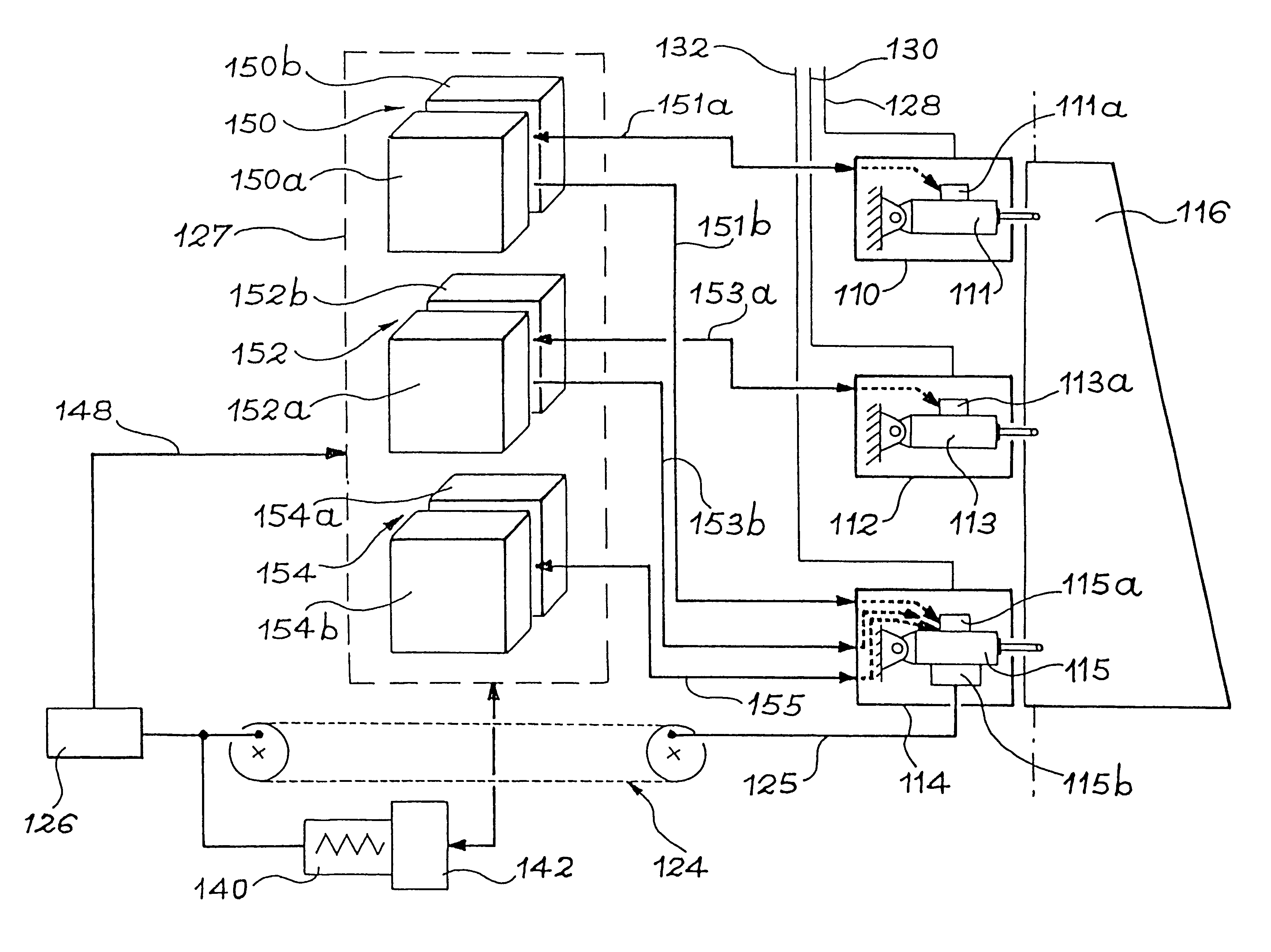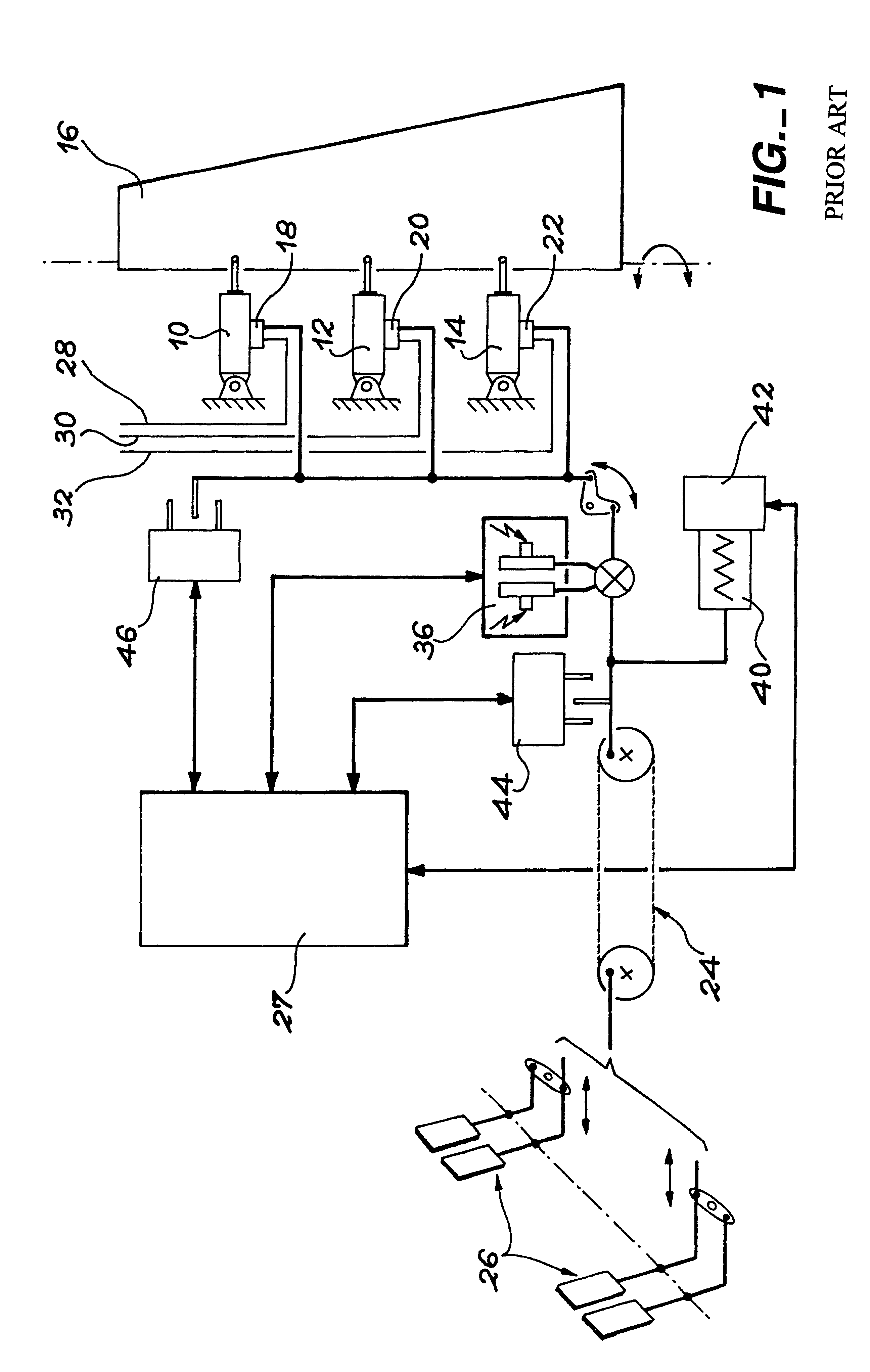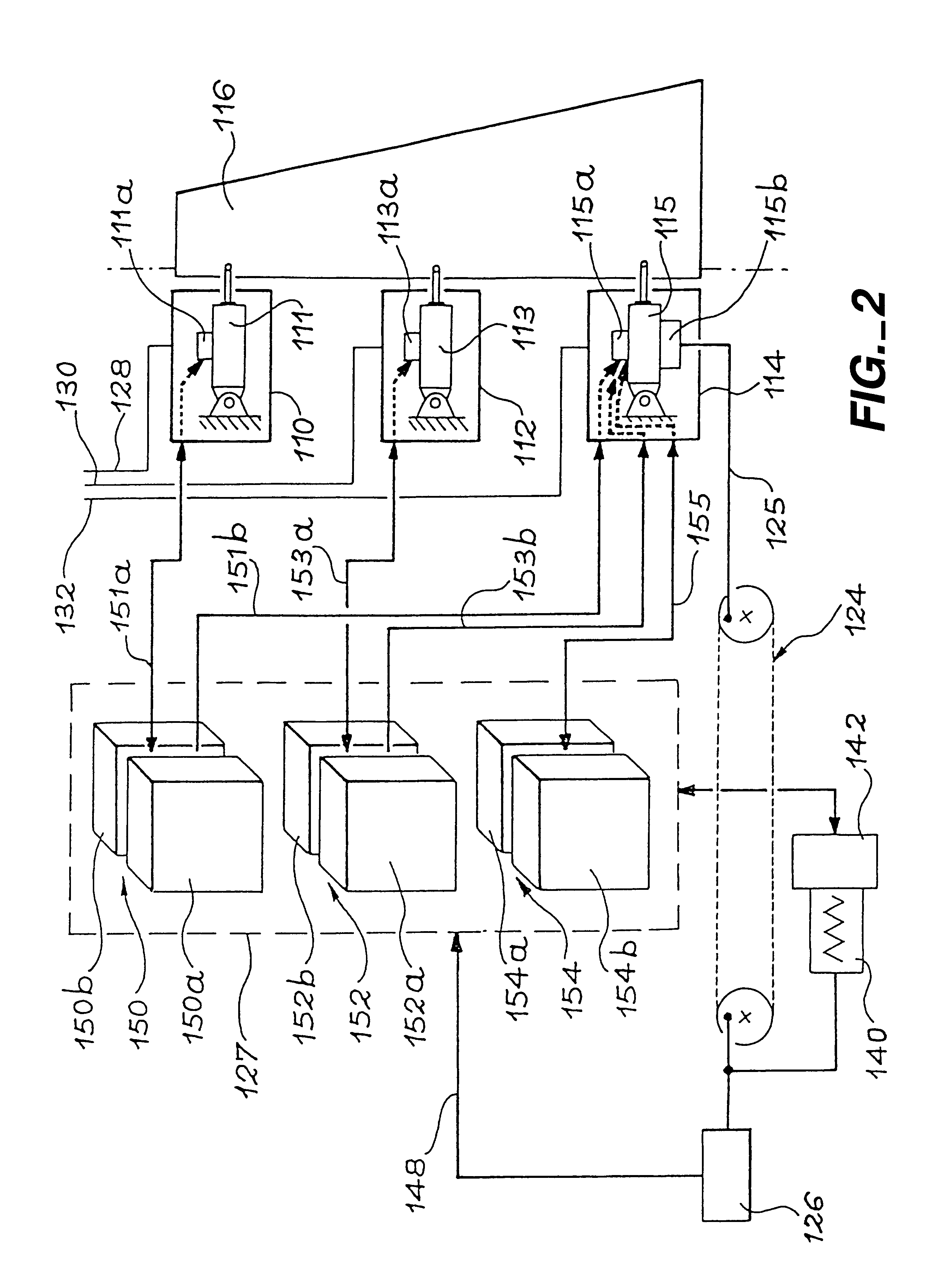Process and device for the control of the rudder of an aircraft
a technology for aircraft rudders and control surfaces, applied in process and machine control, actuation personally, instruments, etc., can solve problems such as mechanical backup, mechanical failure of all controls, and unfavorable control precision of mechanical transmission systems
- Summary
- Abstract
- Description
- Claims
- Application Information
AI Technical Summary
Benefits of technology
Problems solved by technology
Method used
Image
Examples
first embodiment
FIG. 2 is a simplified diagrammatic representation of a control surface control device according to the invention.
FIG. 3 is a simplified diagrammatic representation of a actuator having an electric control input able to equip the device of FIG. 2.
FIG. 4 is a simplified diagrammatic representation of a mixed actuator able to equip the device of FIG. 2.
FIG. 5 is a simplified diagrammatic representation of another type of mixed actuator able to equip the device of FIG. 2.
second embodiment
FIG. 6 is a simplified diagrammatic representation of a control surface control device according to the invention.
third embodiment
FIG. 7 is a simplified diagrammatic representation of a control surface control device according to the invention.
DESCRIPTION OF EMBODIMENTS OF THE INVENTION
In the following description, identical or similar components in the different drawings carry the same references in order to facilitate the understanding thereof.
FIG. 2 shows in simplified form a first embodiment of the rudder control device according to the invention, which has three actuators 110, 112 and 114 equipped with jacks 111, 113 and 115 for manipulating a control surface 116. The actuators 110 and 112 have electric control inputs 111a and 113a and the actuator 114 is a mixed actuator having an electric control input 115a and a mechanical control input 115b. The actuators are of the "single body" type, i.e. each actuator is connected to a single hydraulic circuit and only has one jack.
The jack of each of the actuators is supplied by a different hydraulic circuit. The hydraulic circuits of jacks 111, 113 and 115 are pa...
PUM
 Login to View More
Login to View More Abstract
Description
Claims
Application Information
 Login to View More
Login to View More - R&D
- Intellectual Property
- Life Sciences
- Materials
- Tech Scout
- Unparalleled Data Quality
- Higher Quality Content
- 60% Fewer Hallucinations
Browse by: Latest US Patents, China's latest patents, Technical Efficacy Thesaurus, Application Domain, Technology Topic, Popular Technical Reports.
© 2025 PatSnap. All rights reserved.Legal|Privacy policy|Modern Slavery Act Transparency Statement|Sitemap|About US| Contact US: help@patsnap.com



